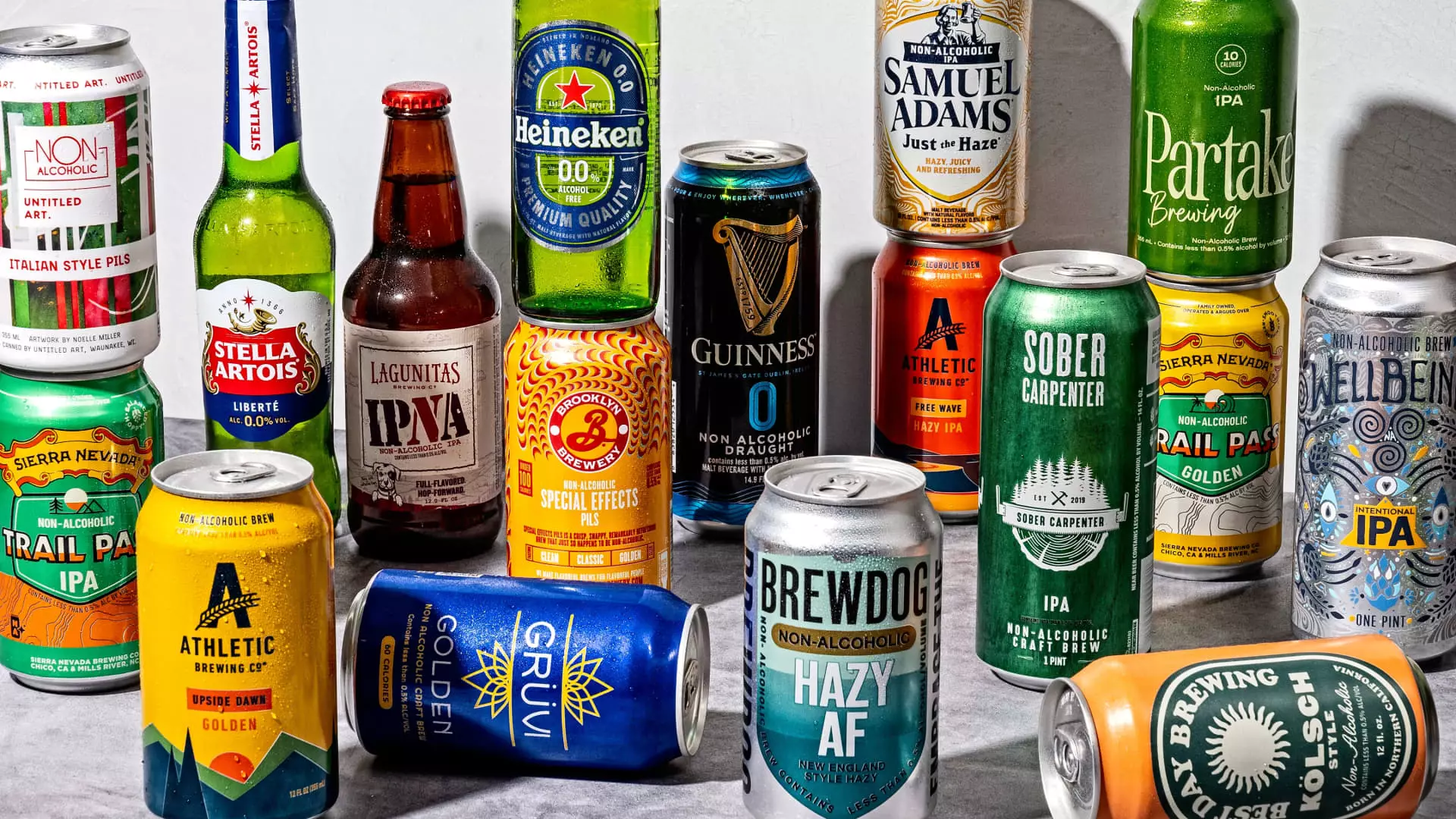Non-alcoholic beer is emerging as a cultural phenomenon that signals a profound shift in societal drinking habits. According to projections from industry tracker IWSR, non-alcoholic beer is on track to surpass ale as the second-largest beer category globally. While many amongst the old guard may scoff at the notion of such an unassuming beverage transforming the landscape of beer consumption, this trend is not simply a passing fad—it’s a reflection of a rapidly evolving societal consciousness, particularly among younger generations.
The fact that overall beer volume is expected to decline roughly by 1% in 2024, while non-alcoholic beer sees a remarkable 9% increase, makes it impossible to ignore the significance of this trend. The traditionalists clinging to ales and lagers may find solace in their favorite brews, but they could be missing out on the dynamic landscape surrounding them. Non-alcoholic beer’s growth is not merely based on consumption statistics; it embodies the values of moderation, wellness, and a modern interpretation of conviviality.
Millennials and Gen Z: The New Trailblazers
One of the most striking features of this trend is its traction among Millennials and Generation Z. The monikers “sober curious” and “damp lifestyle” reveal an astounding transformation in how younger drinkers perceive alcohol consumption. They aren’t outright rejecting alcohol but are gravitating towards moderation in increasingly creative ways. They are redefining the ritual of socializing, and in doing so, they challenge the long-standing notion that drinking equates to quality time.
With a staggering 92% of the worldwide beer market still dominated by lagers, the rise of non-alcoholic beer might seem audacious. Yet, statistics reveal just how resonant this shift is: non-alcoholic beer’s retail sales surpassed $17 billion in 2023, and companies have rushed to meet consumer demand. The implications for traditional brewers and emerging brands alike are significant, not only in terms of market share but in the broader cultural dialogue about alcohol’s place in society.
The Flavor Revolution
Newer non-alcoholic beers have undergone a renaissance, bringing with them flavors and drinking experiences that closely mimic their alcoholic counterparts. Major players in the beer industry have taken notice and flooded the market with zero-proof alternatives ranging from Guinness to Budweiser. In a mere five years, this dynamic product category has made great leaps forward, proving that non-alcoholic beer is far from the watered-down versions of yesteryears. As brewers invest in improving the taste and consumer appeal of these products, they are not just selling a drink—they are promoting a lifestyle that aligns with personal health choices.
This evolution in flavor is foundational to the category’s acceptance among traditional beer drinkers, who often approach non-alcoholic options with skepticism. The misconception that non-alcoholic beers lack character is being swiftly dispelled by better brewing techniques. The prevalence of brands like Athletic Brewing, which captures a significant market share within less than a decade of its founding, demonstrates that the consumer thirst for innovative alternatives isn’t merely theoretical—it’s real, palpable, and persistent.
A New Face for the Beer Industry
This rising tide of non-alcoholic choices has not gone unnoticed by celebrities and public figures, who have seized the moment to launch their own brands. The introduction of celebrity-backed beverages may feel like another trend tailored for rampant consumerism, but it also serves as a significant endorsement of the cultural shift toward moderation. By engaging in partnerships with these brands, public figures like Tom Holland and Dwayne Wade not only amplify the marketing reach of non-alcoholic beers but also contribute to the normalization of drinking less or choosing to abstain.
While some traditionalists may shrug off these developments as mere novelties, it’s clear that the acceptance of non-alcoholic beer is a barometer of changing attitudes. As younger consumers embrace these choices, the entire drinking ecosystem must adapt to survive and thrive. With shifting priorities centered around health, mindfulness, and altered social landscapes, the rise of non-alcoholic beer is not just a trend—it’s a significant cultural movement on the horizon.
In a world increasingly inclined toward personal well-being, the obsolescence of traditional drinking norms is not only inevitable—it’s already underway.


Leave a Reply